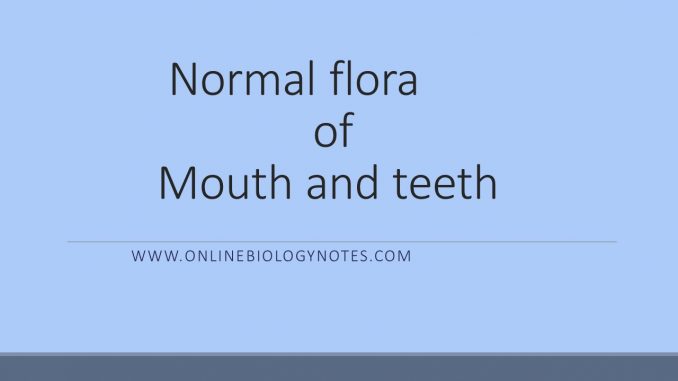
Normal flora of mouth and teeth
Normal flora of mouth:
- Sufficient moisture and abundant food supply facilities growth of microorganism in mouth. However continuous flow of saliva removes microorganism from mouth to stomach and are killed by acidity of stomach.
- Desquamation of layer of tissue in mouth is another mechanism that decreases number of microorganism in mouth.
- Predominant microflora of mouth are;
- Streptococcus spp
- Neisseria species
- lactobacillus
- Veillonella
- Actinomycetes
In Neonates:
- neonates contains lactobacillus as predominant flora during vaginal delivery.
- Infants acquires Gram positive cocci such as Streptococci and staphylococci from mother’s skin during breast feeding.
Normal flora of teeth:
- Anaerobic bacteria such as Bacteroids and Fusobacterium are predominant in teeth.
- Streptococcus mutants also inhabits teeth and it is responsible for dental carries or tooth decay in children.
- When confectioneries products such as chocolate attached on the surface of teeth then S. mutans produces glucan from sucrose. Glucans helps in attachment of bacteria on the surface of teeth and later bacteria ferments fructose to produce lactic acid. The acid corrodes and creates hole on the teeth and finally large number of other normal flora of mouth enter into teeth and damage gums and other tissue.
In children:
- with beginning of development of tooth, oral flora changes predominantly to gram positive anaerobic bacteria such as Streptococcus, Peptostreptococcus
In youth:
- Streptococcus
- Peptostreptococcus
- Veillonella spp
- Bacteroides
- Treponema spp
In old:
- due to teeth lost, predominant flora are Gram negative bacillus eg. Veillonella
